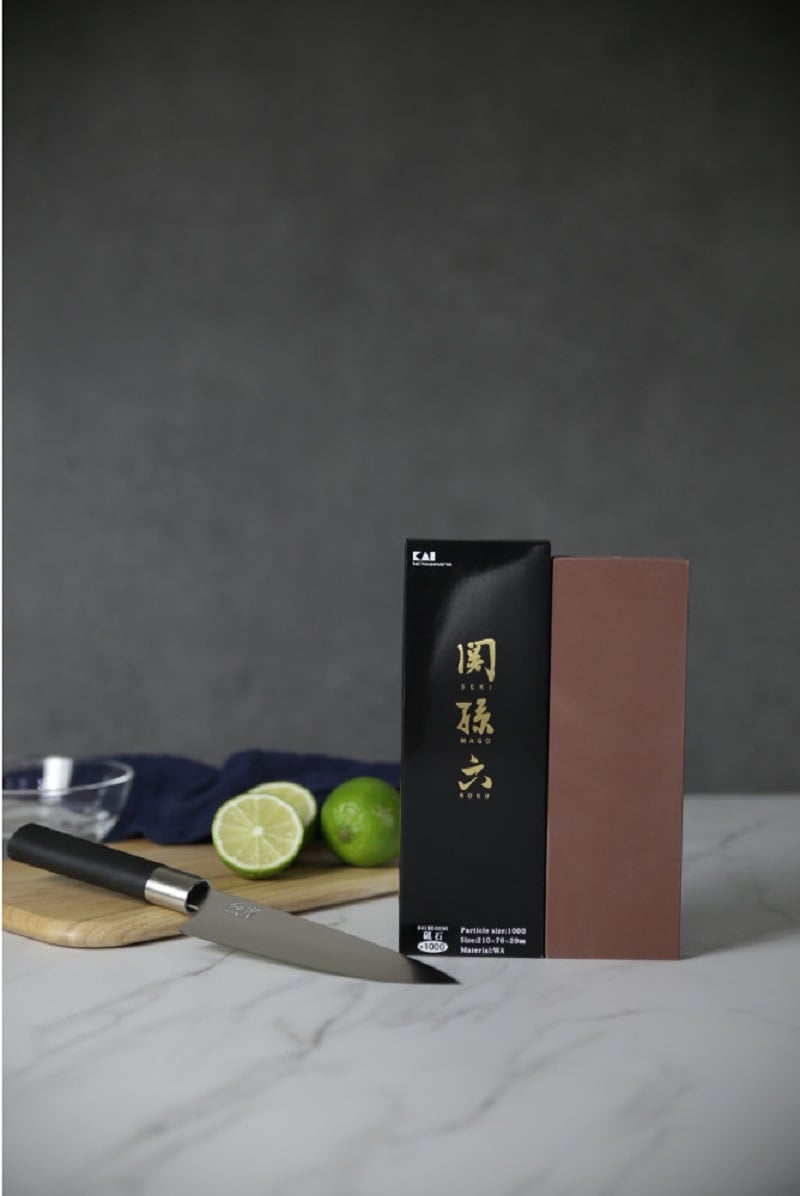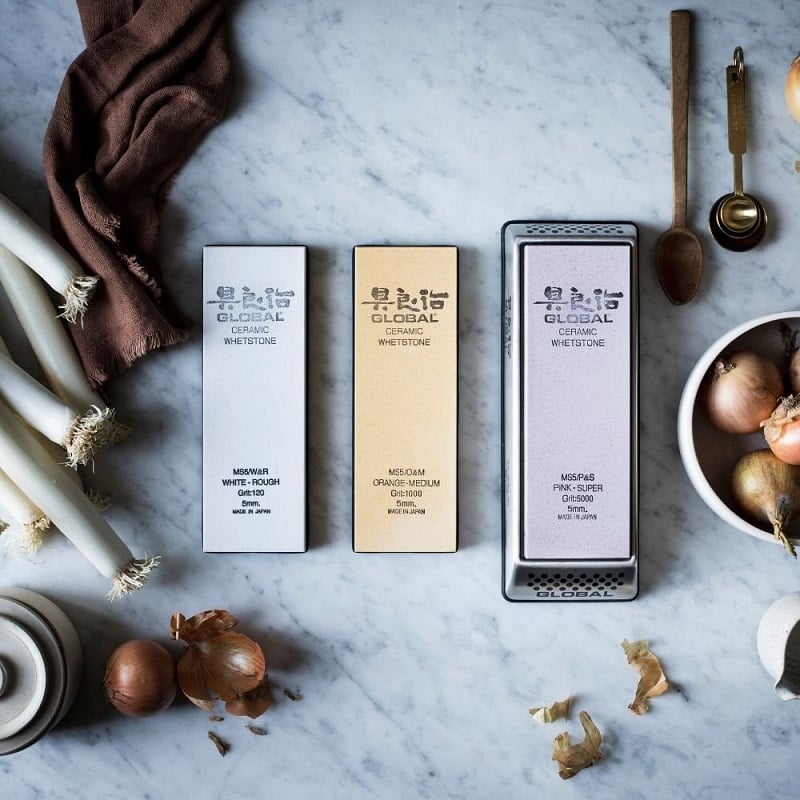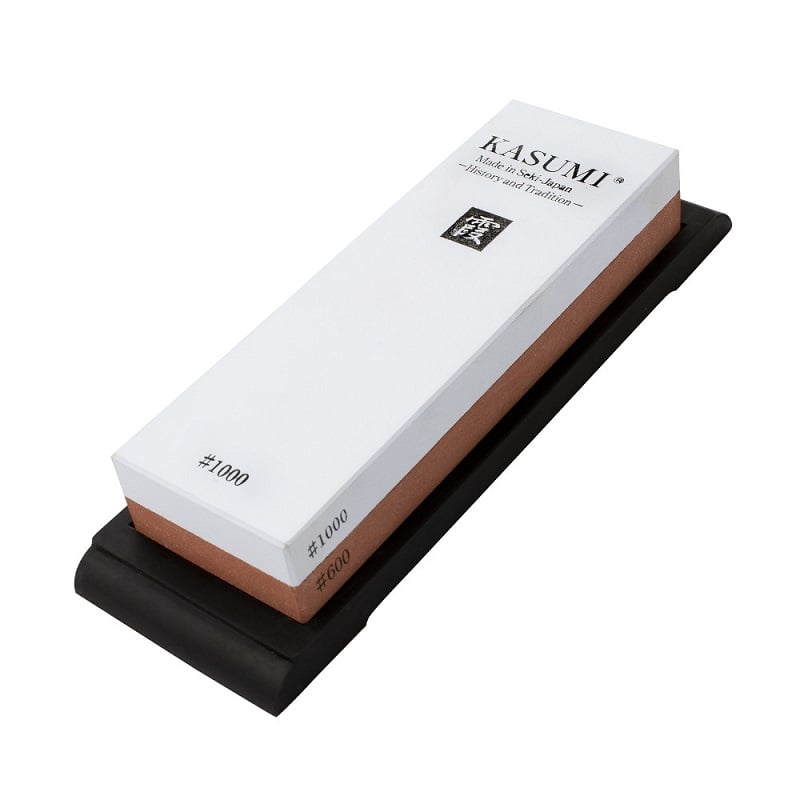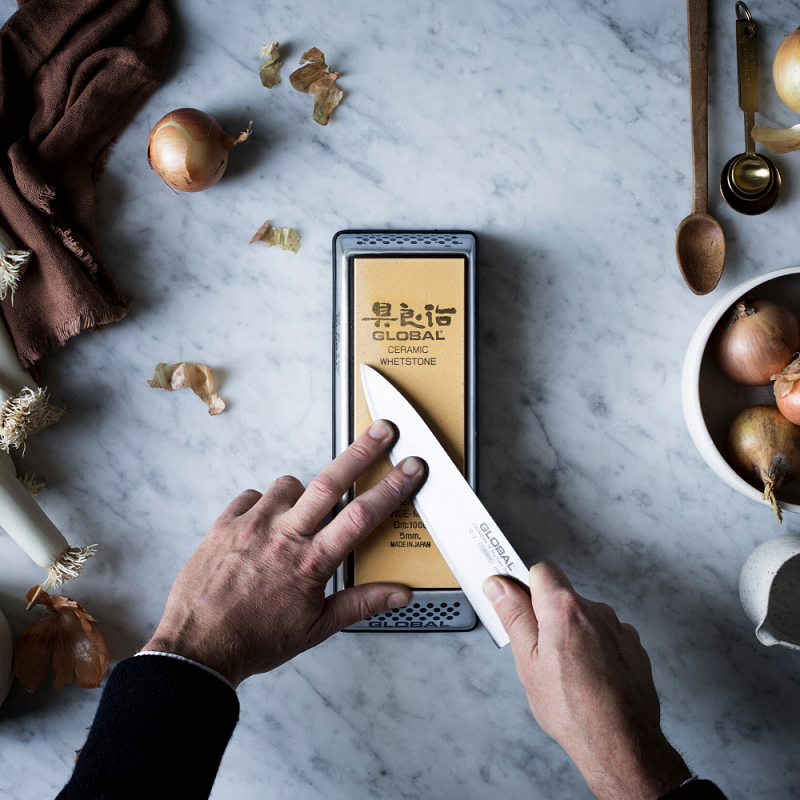What Type of Whetstone should I Use to Sharpen my Knives?
Ask any chef and you will be told that a dull knife poses more danger than a sharp one. It is highly recommended to sharpen your knives from time to time to maintain its swift slicing ability and overall usability. There are various methods and tools that you can use to sharpen your knives. Aside from traditional knife sharpeners, a popular sharpening tool amongst many professional chefs is the whetstone.
What is a whetstone?

A whetstone refers to a rectangular stone with a gritty surface used to sharpen knives and other metal tools.
Japanese whetstones, otherwise known as water stones, can be natural or synthetic. Synthetic whetstones are easy to obtain and raise a burr much faster whilst a natural whetstone can have a slower process but produces a fantastic cutting edge without removing much steel.
Using a whetstone requires a certain skill level to obtain the necessary results. It is popular amongst professional chefs as it provides them with more precision and control when sharpening either Asian or Western-style knives.
What type of whetstone should I use?
When you delve into the world of whetstones, you will come across a frequently used term called “grit”. Grits refer to the size of abrasive particles on the whetstone. Every whetstone will have a number etched onto it to indicate the grit size. A lower grit number indicates a lower density and a rougher surface, ideal for restoring damaged or chipped blades. Higher grit numbers are better for general maintenance and to achieve a smoother and polished finish.

For ease of understanding, we have grouped the grits into different brackets to better explain their best purpose:
Coarse Whetstones (Less than #1000)
Any whetstone with less than #1000 grit is primarily used for damaged or extremely dull knives. If you have a knife with chipped blades, these stones will even them out in no time. However, due to the very rough stone surface, it is not advisable for general sharpening as it will likely remove more steel than necessary.
Medium Whetstones (#1000 to #3000)
The #1000 grit whetstone is one of the most common sharpening stones for basic sharpening. If you find that your knives are blunt, the #1000 whetstone is good to get you started. Take note that this stone should not be your regular sharpening stone as it can wear your knife down.
If you are someone who regularly sharpens your knife, you will be better off using the #2000 or #3000 whetstone. Do keep in mind that medium whetstones are designed to sharpen dull blades and not for maintaining its edge.
Fine or Finishing Whetstones (#4000 and above)
This range of whetstones is perfect for achieving that fantastic razor-sharp edge coupled with a mirror-polished finish. When restoring an extremely dull knife, a finishing stone will give you a super refined edge that cannot be achieved with just a low grit whetstone. Moreover, you will not be able to efficiently restore a dull edge with just a finishing stone due to the very fine grit.
A tip to take note of: For knives used to cut meat, you can opt for finishing stones with #4000 or #6000 grit. On the other hand, knives that are honed using a #8000 grit whetstone are ideal for slicing fruits, vegetables, or seafood. The fine cutting edge is ideal for slicing delicate ingredients.
Combination Stones
For beginners, we highly recommend getting a combination whetstone. With a combination stone, you get two different types of stones in one, making it an attractive option to many. A common combination whetstone will have a coarse surface on one side and a finer surface on the other. For general sharpening and maintenance of regular kitchen knives, a combination stone that includes a medium whetstone of #1000 will do you just fine.

Getting a combination whetstone is a recommended choice if you are new to the whetstone world or if you only sharpen your knives from time to time. Once you have the experience and confidence to handle different whetstones for heavy-duty use, you can opt for dedicated whetstones to suit your various sharpening needs.
How to use a Whetstone?

- Depending on the whetstone that you have on hand, you may or may not need to lubricate it with water. Check the manufacturer's manual prior to use.
- Place the stone on a countertop or a cutting board with a damp tea towel underneath to help keep the whetstone from sliding when in use.
- With one hand, hold your knife firmly and angle your blade against the whetstone (20-degree angle for Western-style knives and 15-degree angle for Asian-style knives).
- Using light to moderate pressure only, slide the blade back and forth against the whetstone, covering the entire length of the blade. Give it a few passes (depending on how dull the blade is) then turn the knife over and repeat the process on the other side of the blade.
- Flip the whetstone over and repeat Step 4 using the finer grit surface.
- Once you're done, rinse the blade and the whetstone to remove any metal particles. Allow the whetstone to dry completely before storing to avoid any bacteria build-up.
Handling a whetstone requires a certain level of skill to achieve effective results. It is crucial that you know the correct way of using a whetstone or you might risk damaging a good knife. It will take time and lots of practice to pick up the right way of angling your knife against the whetstone so it matches the blade’s profile. We advise that you start with inexpensive knives to practice until you’re more confident with sharpening different style of knives on a whetstone.
Kitchenware Australia strives to provide a wide selection of whetstones for all your knife sharpening needs. Shop our range now or talk to our friendly customer service consultants if you have any questions.

